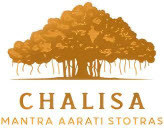ALEXANDER THE GREAT
356-323 B. C.
Alexander III, king of Macedonia, was born in 356 B. C. at Pella in Macedonia. He died thirty-three years later (13 June 323) in Persia and is known to history as Alexander the Great.
As a teenager his tutor was Aristotle who imbued him with a love of Greek culture which never left him. He won his first battle at the age of 14, and when 16 he commanded forces of his father’s army at the Battle of Chaeronea which was won by Macedonia.
His father, Philip II, was assassinated in 336, and Alexander succeeded to the throne with the support of the army. He then engaged on a career of conquest which took him through Per sia, to Egypt and ultimately to India. For the purposes here, the concern is his activities in India.
Alexander fought four great battles. At Granicus (334) he defeated the Persians, at Issus (333) he defeated Darius and his Persian army, at Gaugamela (331) he defeated them again, and finally at the Jhelum River (326) he defeated King Porus and his Indian army in what is known as the Battle of the Hydaspes.
Alexander had left Bactra in 327 and proceeded through what is present day Afghanistan. He crossed the Hindu Kush and invaded India, but to secure his lines of communication he had establish ed garrisons near modern Kabul. He spent the winter of 327-326 fighting tribes in the Kunar and Swat Valleys and eventually conquered the city of Nyasa.
At Taxila he met Raja Ambhi with whom he arranged for support in the form of elephants and troops in return for aid against Taxiles’ enemy Porus.
Prior to the battle Alexander was on the east bank on the Jhelum and Porus on the west. The monsoons had begun, and Porus did not believe Alexander would attack until after the monsoons were over because he thought the river was unfordable, which it was. However, Alexander found a place about twenty-two kilometres north, and crossed at the point. He then attacked Porus in a ferocious battle during which Porus’ elephants panicked and trampled friend and foe alike.
According to Plutarch, after the battle Alexander asked Porus how he wished to be treated; and Porus answered: “As a king. “This so impressed Alexander that he made Porus satrap of his Indian conquests.
Alexander wished to push farther east at this point, but his troops, who were weary of battle and not a little homesick, came close to mutiny. He decided to return to Persia. He went by land with part of his army while his admiral, Nearchus, went by sea with the remainder of the army.
Alexander’s last years were spent consolidating his empire and trying to solve problems which had remained unsolved while he was busy fighting battles. That he cried because he had no more worlds to conquer is probably more apocryphal than true.
Alexander’s influence on world history is difficult to underestimate. The period which followed his death is known as the Hellenistic Age.
When it was over, the Age of Rome took its place. Greek had become the lingua franca of the Mediterranean region, and this facilitated the spread of Christianity there.
It cannot be said that Alexander the Great’s influence in India was great. The extent to which he may have influenced Indian political and social institutions is negligible, and the same can probably be said of Greek influence on Indian learn ing. To quote the French scholar Sylvain Levy, “The name of Alexander the Great which has maintained the same prestige in the traditions of the Near East as in those of the West has not yet been discovered even in a single Indian text. ”
However, in Gandhara and Taxila are found works which combine the best of Indian art with the best of Greek art.
Can this be the only legacy of Alexander in Greater India?
— Henry Scholberg
Suggested Further Readings
- M’Crindle, John Watson, 1825-1913.
The invasion of India by Alexander the Great . . . — New York : Barnes & Noble, [1939]
xxxix, 432 p. : ill. , maps ; 23 cm.
Reprint of 1896 ed. - Tarn, William Woodthorpe, Sir, 1869-1957.
Alexander the Great. — Cambridge (England) : University Press, 1948.
2 v. : fold. map ; 23 cm.
